Thanks to a multitude of complimentary features the Spectre’s strongest suit is how well it tours, but the downhill chops aren’t half bad either. While this boot could be used in-bounds, where it really shines is it’s all round backcountry versatility.
Downhill chops
A quick rundown on the components of this boot lend credence to the idea that it can dish out a solid welter-weight punch in difficult conditions, though it still wouldn’t be the boot of choice for a giant slalom race. La Sportiva keeps the weight down with liberal use of Grilamid® while simultaneously making the boot rigid so every ounce of force is directly translated to your skis. The cuff is skeletonized with ribs eminating from a Grilamid® spine up the back of your leg to hold you snug with a minimum of material. To call it a 110 flex shell is being overly modest, or deluded. Make no doubt about it, this boot is stiff right off the block, not a dreamy progressive flex, although with enough mass behind it, or time in the field, it might flex more smoothly. Thus you will want to adjust the forward lean up or down, from 10° to 14° to 18°, to optimize where you want that stiffness to kick in.Touring
In the touring department the Spectre rivals anything out there, including Dynafit’s TLT 5 line. Without a liner the cuff rakes back an impressive 30°+, so any limits to walking range of motion come elsewhere. The actual mode switch is large, and easy to flip up or down.Thanks to a bellows in the “elbow” of the tongue, the tongue flexes where the foot and lower leg join, allowing the leg to flex a fair amount without even loosening the buckles or power strap. For those making haste, this will trim your transition times significantly. Then, once you’re already underway you can quickly flip open the buckles.
Here’s the real advantage of the Spectre. By using Pegasus buckles the latch stays attached even when the buckle is open and tension is absent. That’s because of the unique Pegasus attachment mechanism that forces you to snap the beveled hook on the mating clamps which hold it there whether taut or not.It takes a bit of time to get used to snapping them on, and may cause a bit of frustration on an icy day, but for quickly switching from locked to free you would be hard pressed to improve on these buckles. They are micro-adjustable with a full centimeter of adjustment range – better than any alpine boot I’m aware of. They also flip open to get out of the way of the tongue so you can get in or out of the boot easier.
The Spectre comes with all the other things you would expect in a good AT boot – tech inserts, Vibram sole, power-strap and a heat moldable liner.
The tongued liner uses a closed cell foam, similar to Ultralon, to deliver uniform density when molding. A softer foam is used at the ankle to provide more mobility when walking.
Size and shape
As you might expect, this boot has a fairly narrow last. My measurement indicated a 96mm last, but my measurement position may not have been the correct one. The heel is sculpted well to help hold your heel down, and the tongue position is adjustable to accommodate low to slightly above average instep heights. In theory with a tongued shell any volume foot can fit inside comfortably, but the width may put a limit on some feet.Conclusion
When you know you’re going deep, fast, or long, weight and touring mobility matter the most. In that realm, the Spectre has few equals. In the downhill department it holds its own. It isn’t setting any records for downhill performance, nor does it need to offer many apologies either.
La Sportiva
Spectre
MSRP: $600
Weight/foot: 3 lbs., 3 oz. (1445 g)
Sizes available: 25 – 31.5 (mondo)
PS: Backcountry Magazine agrees, the Spectre is a great AT boot, awarding it Editor’s Choice for the 2014/15 season.
© 2013

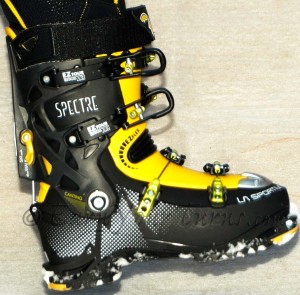
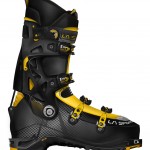
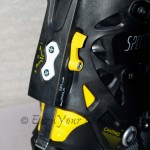
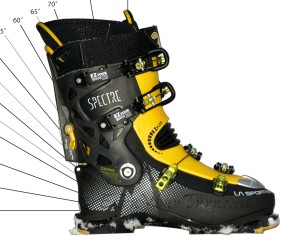
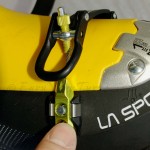
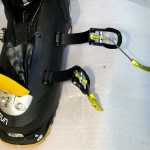

2 comments
I always appreciate your thorough reviews. Any idea how this last compares to the tlt 5? I use a mountain with an intuition wrap liner to take up volume for my very narrow but size 13 feet. Thanks.
Without having both “in stock” and available to compare side by side I can only say they are very similar in terms of the “last” (shape, width, height). The Spectre seems to be more accommodating to different volume feet. By volume I mean the instep height which is usually the factor that distinguishes one model from another. Width matters too, but is more easily determined. Instep height is usually not as well defined, or accounted for.